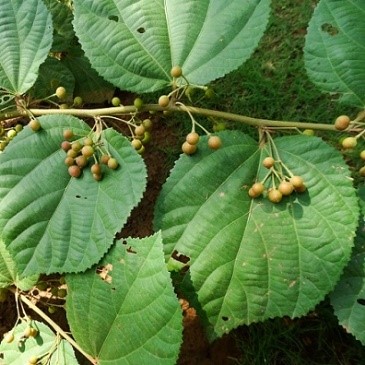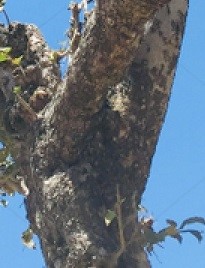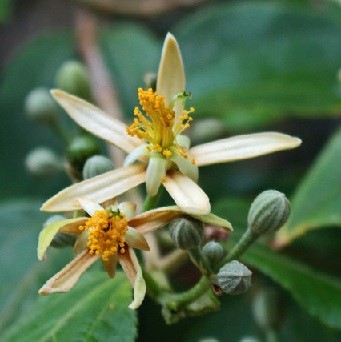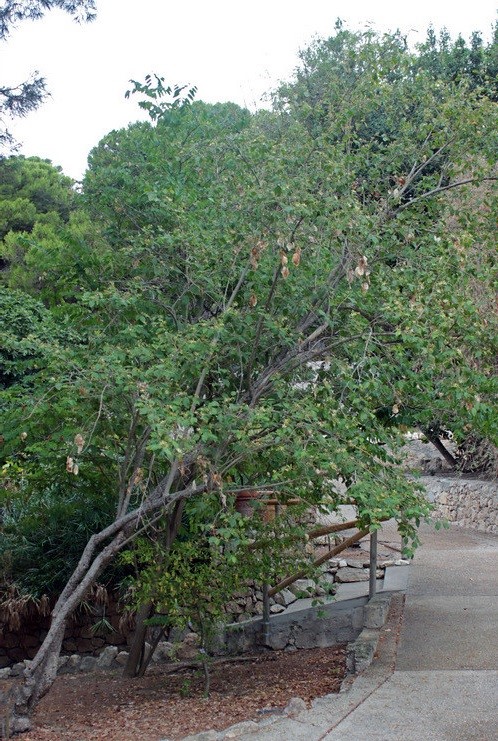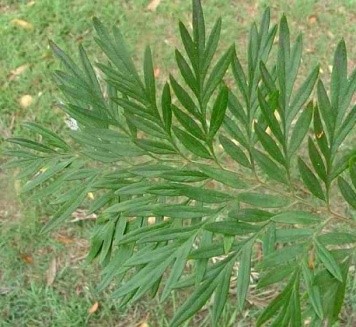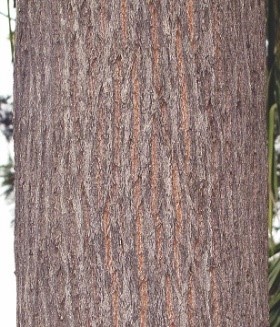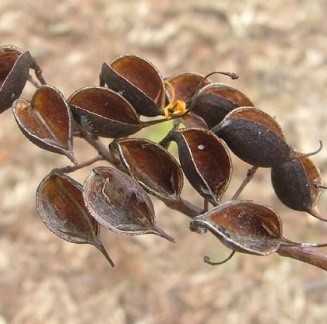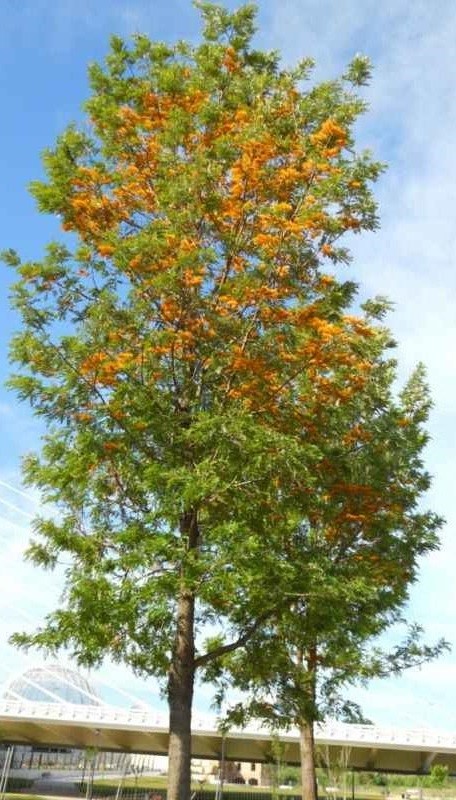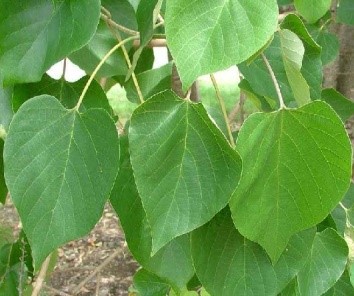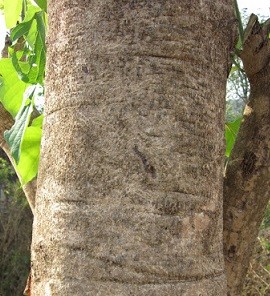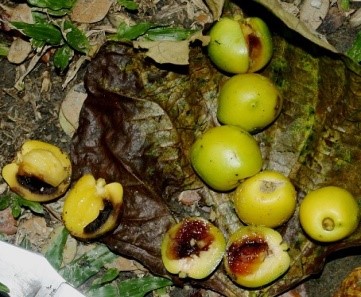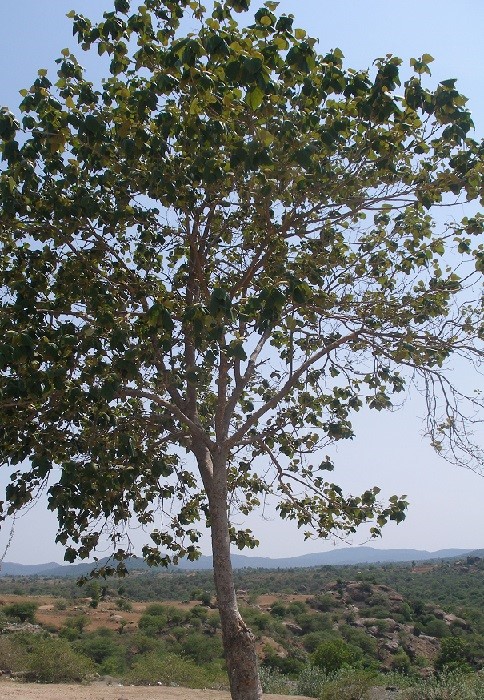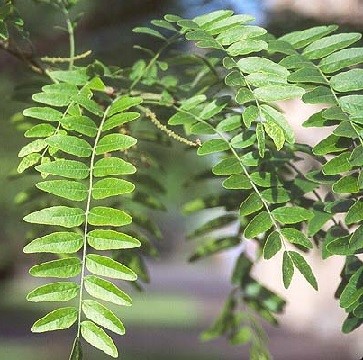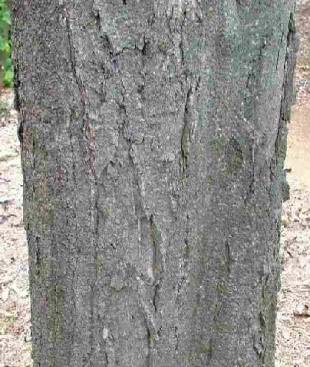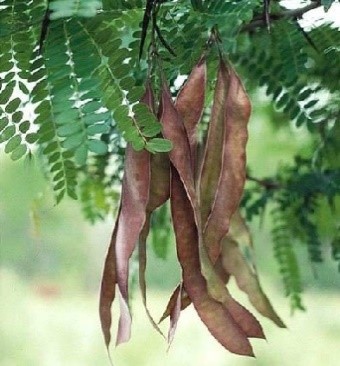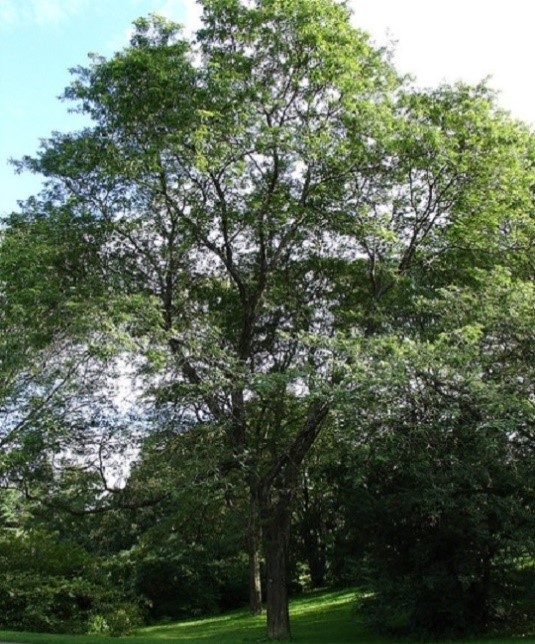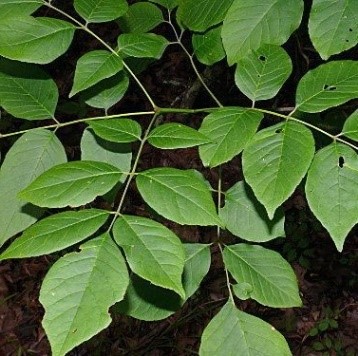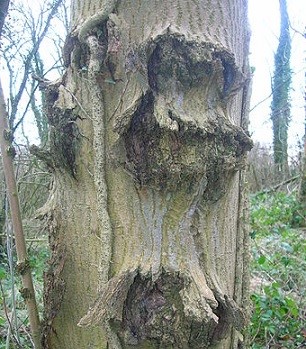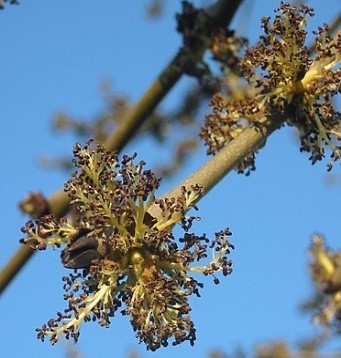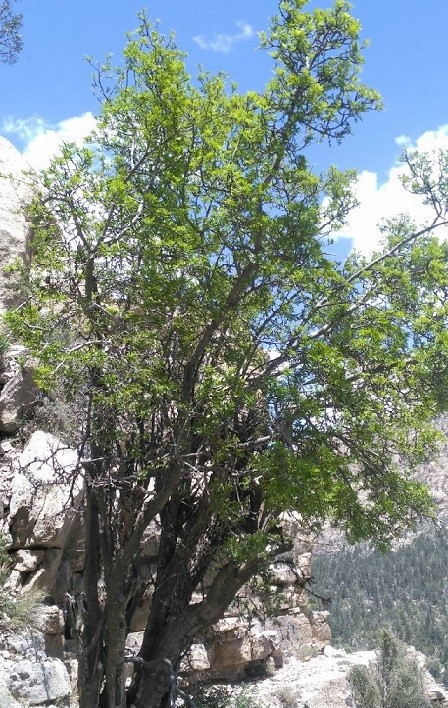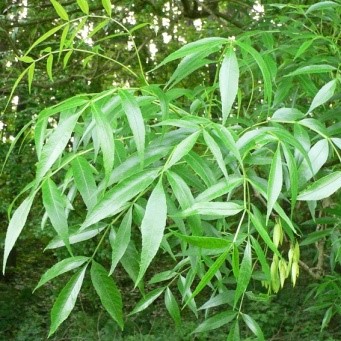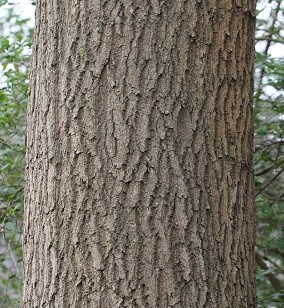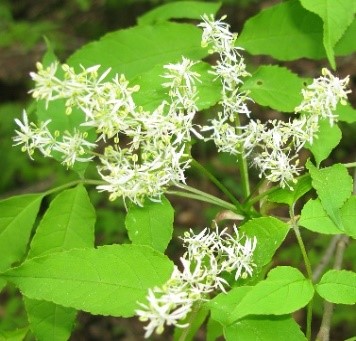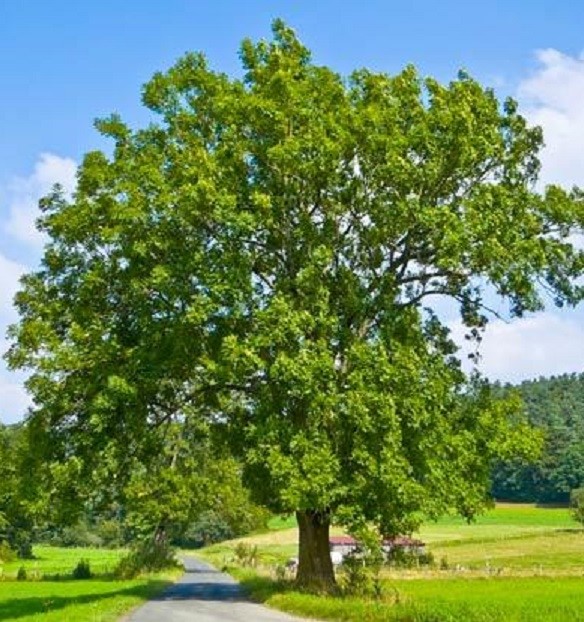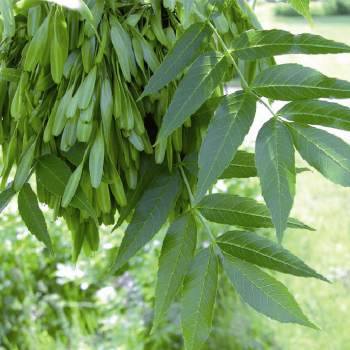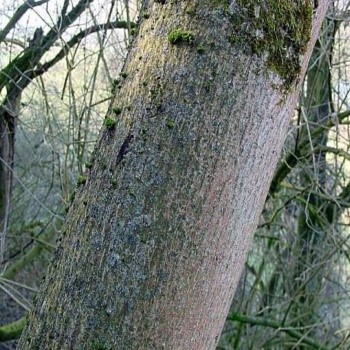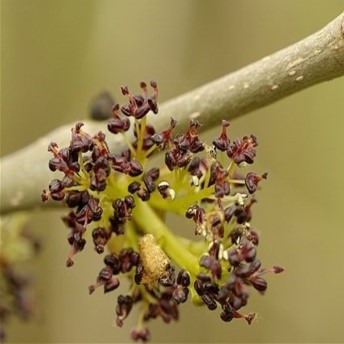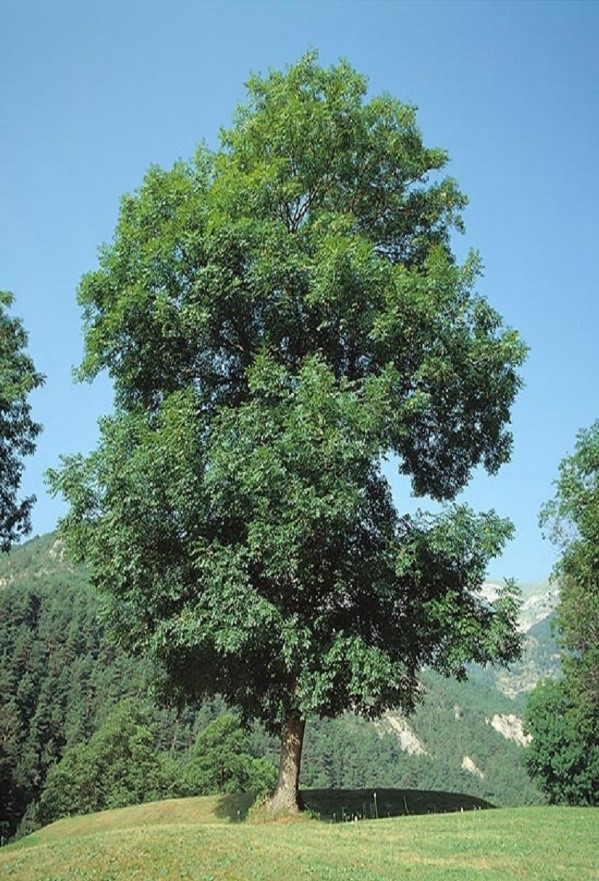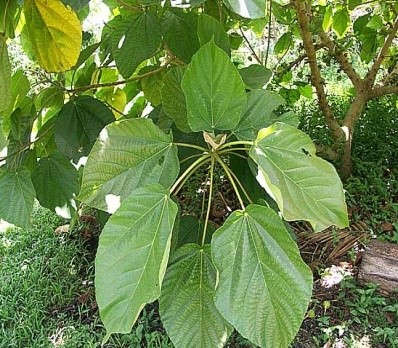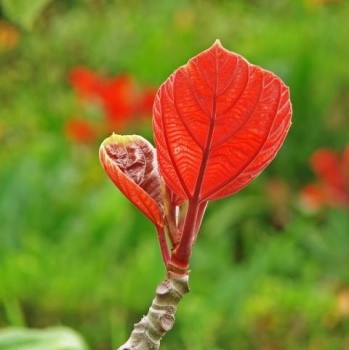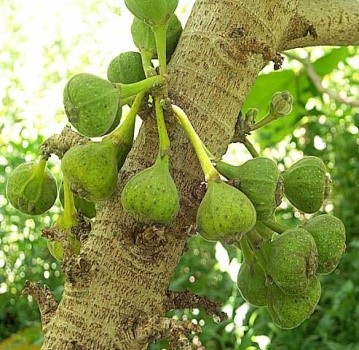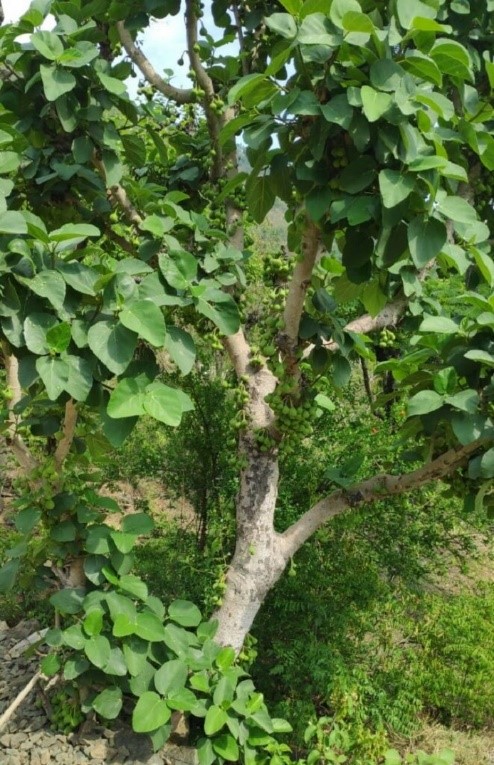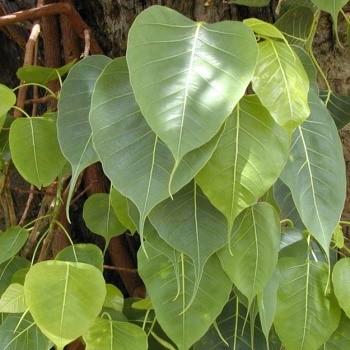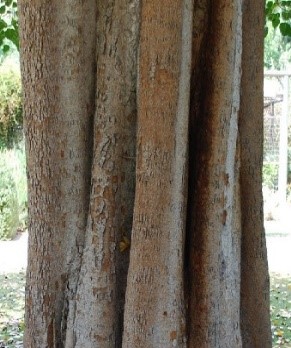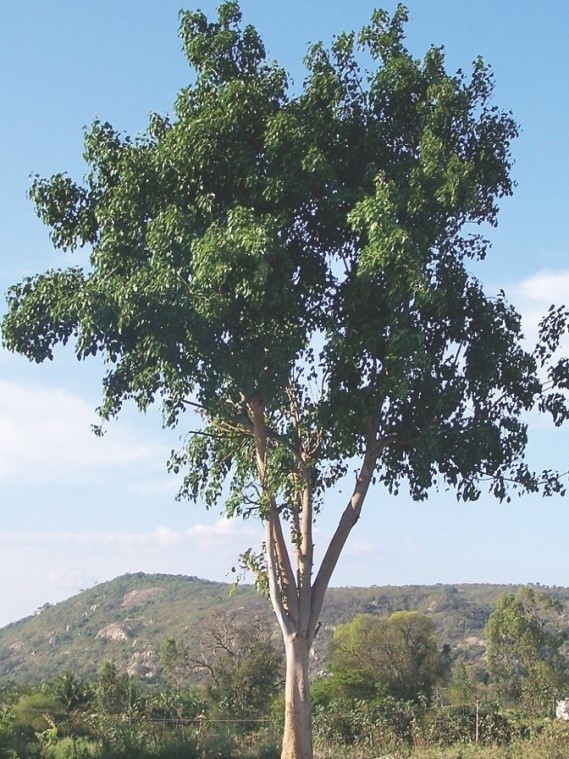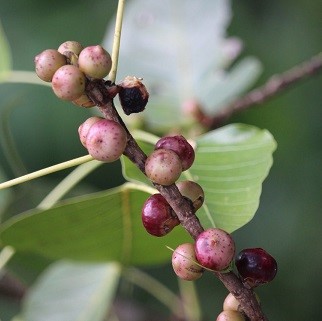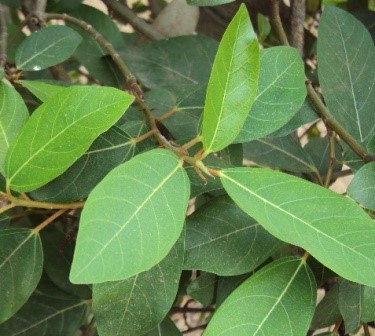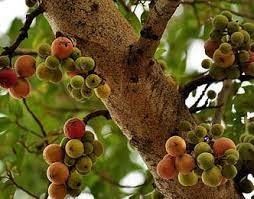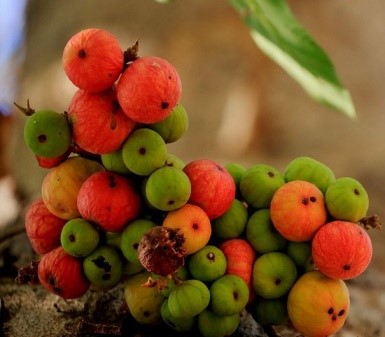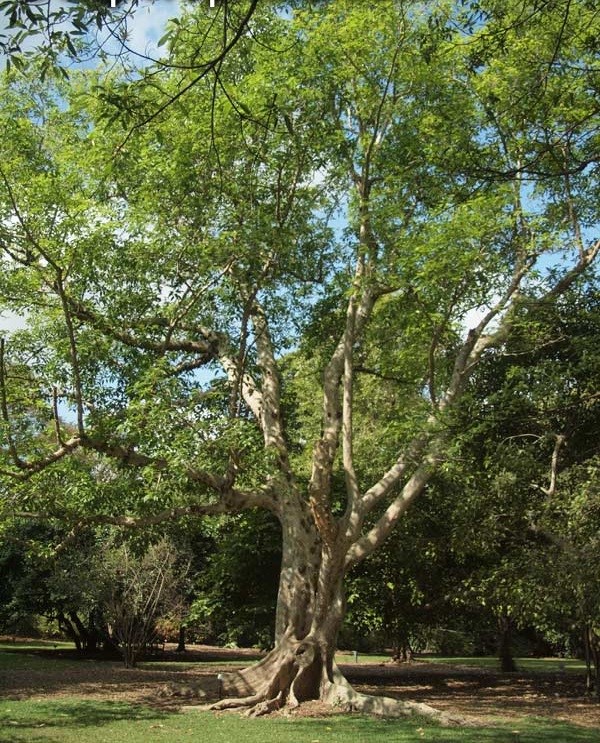Trees of Pakistan
Grewia optiva Drum. ex Burret.
Family Name: Tiliaceae
Local Name : Dhamman, Pharawa, Bhimal
English Name : Grewia
Description : A moderately fast growing, small to medium sized, deciduous tree. It reaches heights of 10 to 12 m with diameters of 3 to 4 cm. The leaves are simple 3.5 to 10 cm by 2 to 6.5 cm. They are slightly pointed, and the edges are toothed. Each leaf has 3 distinct veins. The bark is white-grey and smooth when young becoming furrowed with age. The flowers which grow out the branches opposite the leaves are fragrant, white, yellow to red in color. The fruit is a lobed drupe, each lobe 4 to 6 mm in diameter. The fruit is dark green turning to black when ripe. Flowers occur from April to September, while fruit matures between July and December. It appears to be disease and insect free. It is reproduced from cuttings and root suckers, and rarely from seed. Seeds have a very low viability. D
Grevillea robusta A. Cunn.
Family Name: Proteaceae
Local Name : Silver Oak
English Name : Silver Oak
Description : A medium to large, deciduous tree 12 to 20 m tall or more, with diameters of 30 to 90 cm. The crown is conical and long. The fern like, leaves are compound, 15 to 30 cm long, with 11 to 21 pairs of leaflets 4 to 9 cm long. The leaves are green and hairless on the tops with silky, whitish or ash-colored hairs underneath. The bole is straight, and the bark is light to dark grey with many deep furrows. The flowers are in clusters 7 to 18 cm long, very showy yellow to orange in color. The flowers bloom between February and April. The fruit is pod like, boat shaped slightly flattened, 2 cm long, containing 1 to 2 winged seeds. The seed matures April through June. No disease or pest problems have been observed in Pakistan. It i s reproduced from seed. Seed is viable for a short period, unle
Gmelina arborea Roxb.
Family Name: Verbenaceae
Local Name : Gumhar. Yemane
English Name : Grayteak
Description : A medium to large sized, deciduous tree. It reaches heights of 20 to 30 m with average diameters of 60 cm. large trees may have clear boles of 6 to 9 m. Open grown trees have wide crowns, heavy branches and tapered boles. Its large leaves are simple, alternate, 7 to 15 cm long with long stalks. The leaves are heart shaped (cordate). The bark is corky, smooth, grey to cream colored. On older trees the bark will peel off in large pieces giving the bole a patchy appearance. The reddish brown or yellow flowers are borne when the trees are leafless. They are tubular in shape, 2.5 cm across and occur in bunches at the ends of the branches. The fruits are a succulent drupe 3 cm long. It flowers in February to April, and its fruit matures between May and June. Each drupe contains a hard
Gleditsia triacanthos Linn.
Family Name: Leguminosae
Local Name : Dozakh
English Name : Honey Locust
Description : A large deciduous tree with a spreading crown. Heights of 25 m are not uncommon; diameter will range from 0.6 to 1 m. Leaves are compound between 12.5 and 17.5 cm long. Twigs and branches are armed with thorns. The flowers are greenish and occur as hanging bunches with the individual flowers arranged along the central axis. Flowering usually occurs in May and June. The fruit is a large pod, 50 cm in length and 3.7 cm in width. The pod is pulpy and encases the seed. Seed ripens in September and October. It is reproduced both from seed and by vegetative means. Under cold storage seed will remain viable for 2 years. Hot water or acid treatment is need to overcome seed coat dormancy. MAI in the central plains of the United States is recorded as 4.6 m3/yr over a period of 18 to 35 ye
Fraxinus xanthoxyloides (G. Don) D.C.
Family Name: Oleaceae
Local Name : Shang, Ziarat, Hanuz
English Name : Ash
Description : A shrub or small deciduous tree 3 to 7.5 m tall with diameters of 0.3 to 0.6 m. The leaves are compound, with the leaflets in threes. Leaves are 8 to 12 cm long. The flowers are arranged in dense bunches. They may be unisexual or bisexual and bloom between March and April. The fruit is a winged seed that mature between May and August. It is reproduced both from seed and by vegetative means. The seeds are small and winged and under natural conditions can be transported great distances. The tree has been successfully planted in Ziarat (Balochistan) where it is an associate of juniper. It grows very slowly. MAI diameter growth of 0.25cm /yr is common. One year old coppice shoots are 0.25 to 0.9 m tall. It has no known insect or disease problems. Close grained, wood is white and har
Fraxinus hookeri Wenzing.
Family Name: Oleaceae
Local Name : Sum
English Name : Ash
Description : A large, deciduous tree 18 to 30 m tall with diameters of 0.6 to 1.0 m. The crown is oval shaped and dense. The leaves are compound, with the leaflets in threes. Leaves are 3 to 25 cm long. The bark is smooth and stem straight. The bark is light to dark grey. Roughness of the bark increases with age. Small white flowers are arranged in bunches and usually bloom between April and May. The fruit is a Swinged seed, 3 to 3.5 cm long and 6 to 8 cm wide. The seed matures between May and October. It is reproduced both from seed and by vegetative means. The seeds are small and winged and under natural conditions can be transported great distances. It grows fast. Mal diameter growth of 2.0 cm/yr has been observed. It has no known insect or disease problems. Close grained, wood is whitish
Fraxinus excelsior L.
Family Name: Oleaceae
Local Name : Sum
English Name : European ash
Description : This plant is a large deciduous tree growing up to height of 12-18m sometimes more than 43m with a trunk diameter of about 2-3m. The bark of mature tree is thick and vertically fissured. The leaves are of the 20-35cm in diameter and are opposite. The leaves flourish late in spring, and the fall early in autumn. The flowers are borne in short panicles. The fruit is a samara type fruit, and it is about 2.5-4.5cm long and 5-8mm wide. If the fruit is collected and planted in soil when it is not fully ripened and still green, it will germinate in short amount of time, however once the fruit is fully ripened and brown, it will not germinate.
Ficus roxburghii
Family Name: Moraceae
Local Name : Injeer
English Name : Roxburgh Fig
Description : This plant is evergreen and perennial shrub or a small tree that grows up to 5 to 10 m long vertically with numerous branches, the trunk is brown in colour. The leaves are very large, round and ovate and are of about 30 to 40 cm long and 40 to 45 cm wide. Its petioles are about 14 cm long and stipules are about 2 to 3 cm long. Male and female flowers are produced as separate individuals. They start off being red then turn to green. Fruits are in the shape pear and reddish brown when fully ripen. Fruits appear on thin branches emerging from the trunk or from the roots. Fruits are very much liked for the jelly like structure contained in them.
Ficus religiosa Linn.
Family Name: Moraceae
Local Name : Pipal
English Name : The Peepal
Description : A large deciduous tree that is leafless or nearly so for a short period during hot seasons. The leaves are simple, large 10 to 15 cm by 6 to 12 cm and are broadly ovate, abruptly lanceolate, and shiny on the top side. The bark is grey and smooth with small irregular scales when old. It flowers in April and May. The fruit (fig) grows in the axil of the lower leaves and are 1.2 cm in diameter. Seeds are very small. Fruit matures from October to November. It is reproduced both from seed and by vegetative means. It will coppice. Seeds are very small and are sometimes spread in bird droppings. The growth rate of this tree is fast. Height growth of 1 m/yr has been reported. Spiral grained, whitish grey sapwood, having medium strength.
Ficus glomerata Roxb.
Family Name: Moraceae
Local Name : Gular or Gulad
English Name : Cluster fig, Indian rubber
Description : Cluster fig is a fast-growing plant that grows up to12m, with very rough and large leaves typically achieving the size of a large shrub, although old specimens can grow quite gnarled and large. The fruit is about to 25mm in diameter. The fruits are commonly eaten as a vegetable after the seeds have been discarded and made into stir fries and curries. It grows well in sandy, loamy and clay soils and favours well-drained soil. It can grow in semi-shade (light woodland) or no shade. It grows best in moist soil.
